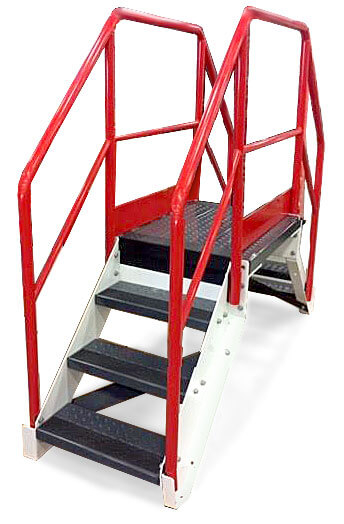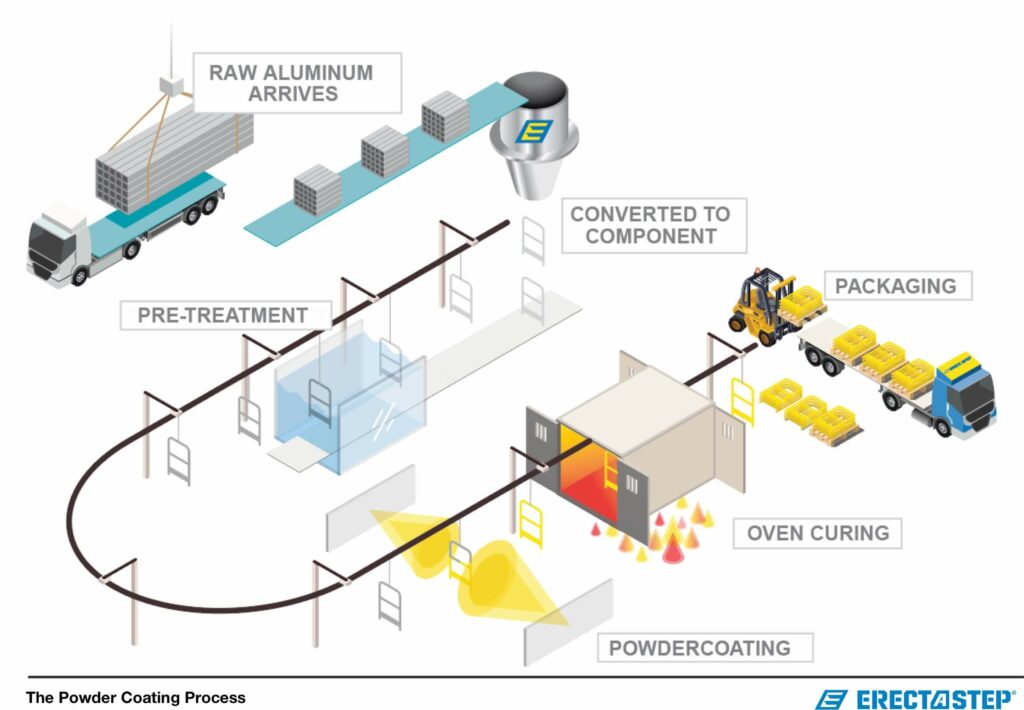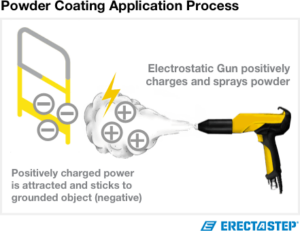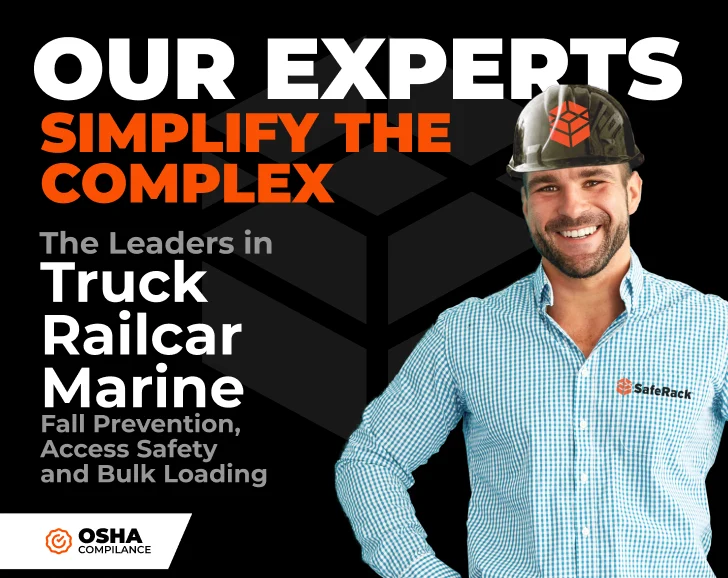Powder coating is when a dry polymer finish is applied to a surface that has been chemically or mechanically cleaned to remove dirt, oil, old finishes, and oxidation.
Painting is the process of using a liquid solvent to add a pigment and binder onto a solid surface. The drying process is complete when the solvent has evaporated leaving only the pigment and binding agent.
| Powder Coating | Paint | |
|---|---|---|
| PROS |
|
|
| CONS |
|
|
Every well-run manufacturing plant depends on fall protection. Keeping your employees safe is a cornerstone of your day-to-day operations. Safety requires durable and protective equipment, which is exactly what SafeRack provides. With powder-coated equipment, you can feel confident knowing that our fall protection equipment is the most durable and safest option on the market.
Powder coating is a proven method that was introduced in the 1960s. Now, powder coating is a very popular method for dry finishing and it has many redeeming attributes. Powder coating now represents more than 15% of the industrial finishing market and it’s used on a broad range of products. Powder coating is aesthetically pleasing and allows for a durable, high-quality finish. It is also more environmentally friendly. To add to it, powder coatings are also available in just about any color and texture. They can withstand harsh environments too, making it the safer option for dry finishing.
Durability is always an important consideration, especially with industrial equipment. When it comes to fall protection, in particular, durability is key. Powder coating makes the equipment more sturdy and allows for greater protection of the equipment in addition to your employees’ protection. Whether you have a harsh environment or are putting a product through a chemical test, the powder coat will serve as a protective layer for all equipment involved.
In addition to all of this, powder coating is also more pleasing to the eye. When it comes to aesthetics, powder coating far outperforms classic paint jobs. Traditional paint will run and chip while powder coat does not. This leads to a more uniform look once the drying process is complete.
Environmental protection is a big part of the world of business today. When choosing a finish based on environmental practices alone, powder coat is the clear winner. Powder coat far exceeds the safety of liquid paint. One thing that factors into this is that the powder coat has no VOCs (Volatile Organic Compounds) and nothing requires disposal at the end of each batch. When it comes to the safety of engineers, traditional paint compounds like acetone have been shown to cause respiratory problems. This makes powder coating safer for your work environment and your employees.
Of course, with all of this considered, traditional painting does still have its place in the dry finishing world. While powder coating is ultimately cheaper when dealing with a high volume of products, there are some initial startup costs involved that may not be feasible when producing a smaller volume of products. In some instances, traditional painting can be a fast and practical way to dry finish an item. If you’re a company with a high volume of products, however, powder coating will be the best all-around for both your company and the environment.
Powder Coated Products
ErectaStep aluminum handrails and metal stairs are built with heavy-duty aluminum with a design load of 200 pounds in any direction. The ANSI safety yellow powder coating resists moisture, corrosive chemicals, scratches, chipping, corrosion, fading and wear. The thick round pipe has an outer diameter of nearly 2″, which helps with gripping and ensures the industrial railing endures years and years of wear and tear.
Aesthetics are important for any business as well. We all want our products to perform well, but making them look good is important too. Again, powder coating outperforms traditional paint in this case as well. While traditional paint often runs and drips, powder coating does not, therefore resulting in a more uniform look once the dry finish process has been completed.

In this day and age companies are becoming increasingly aware of how their business practices affect the environment, and when it comes to what’s better for the environment, powder coating far exceeds the safety of liquid paint. One of the biggest factors is that there are no volatile organic compounds (VOC’s) released into the atmosphere and nothing needs disposal at the end of each batch. In terms of safety to the technicians and engineers using these products, traditional paint compounds, such as acetone, have been known to cause respiratory problems to painting technicians. So ultimately powder coating is safer for both the environment and your employees!
Traditional painting still has its place in the dry finishing world. Powder coating, while ultimately cheaper with a high volume of product, has some initial start-up costs that may not be feasible for a company with a smaller volume of product. In some instances, traditional paint is a fast and practical way of dry finishing, but ultimately if you’re a company with a high volume of product, powder coating will be the best process to use based on its durability, aesthetics, and overall safety for both the environment and the company employees.

 A powder of finely ground pigment and polymeric resin is sprayed onto a metal surface that has been electrostatically charged. When heated inside a curing oven, the resin particles will melt and fuse into a strong and pliable bonded coating. The result is a high-quality coat that has excellent durability and an attractive finish.
A powder of finely ground pigment and polymeric resin is sprayed onto a metal surface that has been electrostatically charged. When heated inside a curing oven, the resin particles will melt and fuse into a strong and pliable bonded coating. The result is a high-quality coat that has excellent durability and an attractive finish.
References:
http://www.powdercoating.org/page/WhatIsPC
https://www.thomasnet.com/articles/custom-manufacturing-fabricating/powder-coating-pro-con
http://www.spartaengineering.com/powder-coating/





















 A powder of finely ground pigment and polymeric resin is sprayed onto a metal surface that has been electrostatically charged. When heated inside a curing oven, the resin particles will melt and fuse into a strong and pliable bonded coating. The result is a high-quality coat that has excellent durability and an attractive finish.
A powder of finely ground pigment and polymeric resin is sprayed onto a metal surface that has been electrostatically charged. When heated inside a curing oven, the resin particles will melt and fuse into a strong and pliable bonded coating. The result is a high-quality coat that has excellent durability and an attractive finish.




